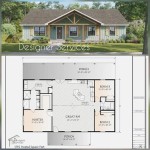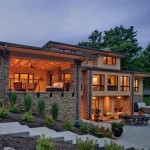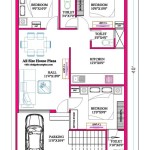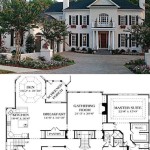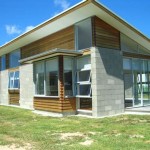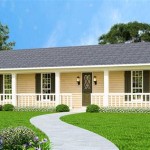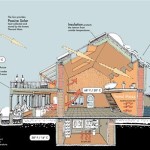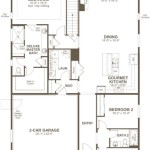3-Family House Multi-Generational Home Plans: Designing for Harmony and Independence
The concept of multi-generational living, where families spanning multiple generations reside under one roof, is experiencing a resurgence. This trend is driven by a variety of factors, including rising housing costs, a desire for closer family bonds, and the need for shared caregiving responsibilities. Designing a 3-family house capable of accommodating such a dynamic requires careful planning and consideration of the diverse needs and preferences of each generation.
A 3-family house, specifically designed for multi-generational living, differs significantly from simply combining separate apartments within a single building. It demands a thoughtful architectural approach that balances shared spaces with private retreats, fostering both connection and independence. The success of such a design hinges on understanding the specific needs of each family unit and creating a living environment that supports their unique lifestyle.
Key Point 1: Balancing Privacy and Togetherness in Multi-Generational Home Design
One of the primary challenges in designing a 3-family multi-generational home lies in striking a balance between privacy and togetherness. Each family unit needs its own private living space, complete with bedrooms, bathrooms, and a kitchen or kitchenette. This allows for individual autonomy and the ability to retreat when needed. At the same time, shared spaces are crucial for fostering a sense of family unity and facilitating interaction.
The design should incorporate clearly defined zones for each family, minimizing noise transfer and visual intrusion. Soundproofing measures, such as insulated walls and floors, are essential to maintain privacy. Separate entrances or clearly demarcated pathways to each unit can also contribute to a sense of independence. Strategic placement of common areas, such as living rooms, dining rooms, or outdoor patios, can encourage interaction without compromising individual privacy.
Consideration should be given to the age and lifestyle of each family unit when designing the layout. For example, grandparents may prefer a unit on the ground floor for easier accessibility, while younger families might appreciate having a dedicated play area for children. The design should be flexible enough to adapt to changing needs over time.
Visual connection plays a significant role in fostering togetherness. Large windows and open-concept living spaces can create a sense of spaciousness and connection, even when families are in their separate units. Shared balconies or decks can provide opportunities for casual interaction and enjoyment of the outdoors.
The concept of "pocket doors" or sliding partitions can be employed to create flexible spaces that can be easily adapted to different needs. These doors can be opened to create a large, shared space for family gatherings or closed to provide privacy for individual units.
Key Point 2: Accessibility and Universal Design Principles
Accessibility is a critical consideration in multi-generational home design, particularly when accommodating elderly family members or individuals with mobility limitations. Incorporating universal design principles ensures that the home is accessible and usable by people of all ages and abilities, regardless of their physical condition.
Key elements of accessible design include wider doorways and hallways to accommodate wheelchairs or walkers, ramps instead of stairs, and grab bars in bathrooms. Lever-handled door knobs and faucet controls are easier to operate than traditional knobs. Non-slip flooring is essential to prevent falls.
Kitchens and bathrooms should be designed with adjustable-height countertops and sinks to accommodate users of different heights. Roll-under sinks and cooktops provide greater accessibility for wheelchair users. Adequate lighting is crucial for individuals with vision impairments.
Consideration should be given to the placement of electrical outlets and light switches, ensuring that they are within easy reach for all users. Smart home technology can also enhance accessibility, allowing users to control lighting, temperature, and security systems remotely.
The principles of universal design extend beyond physical accessibility. The design should also be intuitive and easy to understand, regardless of the user's age or cognitive abilities. Clear signage and consistent layouts can help orient users and prevent confusion.
Integrating these accessible features from the outset is more cost-effective than retrofitting them later. It also ensures that the home is adaptable to changing needs as family members age.
Key Point 3: Shared Spaces and Amenities for Enhanced Family Living
While private spaces are essential for individual autonomy, shared spaces and amenities are crucial for fostering a sense of family unity and enhancing the overall quality of life in a 3-family multi-generational home. These shared areas provide opportunities for interaction, recreation, and shared responsibilities.
A common living room or family room can serve as a central gathering place for family members to relax, socialize, and watch television together. A large dining room can accommodate family meals and celebrations.
Outdoor spaces, such as patios, decks, or gardens, can provide opportunities for relaxation and recreation. A shared garden can be a source of fresh produce and a place for family members to work together. Outdoor cooking facilities, such as a barbecue grill or outdoor kitchen, can enhance outdoor entertaining.
Depending on the family's interests and needs, other shared amenities might include a home theater, a game room, a gym, or a library. A dedicated playroom for children can provide a safe and stimulating environment for play.
Laundry facilities can be shared or separate, depending on the family's preferences. Shared laundry facilities can save space and resources, but they may require a schedule to avoid conflicts.
The design of shared spaces should be inclusive and welcoming, accommodating the needs and preferences of all family members. The spaces should be comfortable, functional, and aesthetically pleasing.
Shared spaces also present opportunities for shared responsibilities. Family members can take turns cleaning, cooking, and maintaining the shared areas. This can help to lighten the load for everyone and foster a sense of teamwork.
Parking is another important consideration, especially when accommodating multiple families. Adequate parking spaces should be provided for each family unit, as well as for guests. A shared driveway or garage can save space and resources.
The thoughtful design of shared spaces and amenities can significantly enhance the quality of life in a 3-family multi-generational home, fostering a sense of community and promoting family harmony.
Beyond the core design elements of privacy, accessibility, and shared spaces, several other factors contribute to the success of a 3-family multi-generational home. These include careful consideration of the site, energy efficiency, and the overall aesthetic appeal of the design.
The site should be chosen carefully, taking into account factors such as proximity to amenities, schools, and transportation. The orientation of the house should be optimized to maximize natural light and ventilation. Landscaping can enhance the privacy and aesthetic appeal of the property.
Energy efficiency is crucial for reducing utility costs and minimizing the environmental impact of the home. Energy-efficient windows, insulation, and appliances can significantly reduce energy consumption. Solar panels can provide a renewable source of energy.
The overall aesthetic appeal of the design is important for creating a welcoming and comfortable living environment. The design should be consistent with the surrounding neighborhood and reflect the family's personal style. High-quality materials and finishes can enhance the durability and value of the home.
Designing a 3-family house for multi-generational living requires a holistic approach that considers the diverse needs and preferences of each family unit. By carefully balancing privacy, accessibility, and shared spaces, it is possible to create a harmonious and fulfilling living environment for all.

Fun Functional Multigenerational House Plans Houseplans Blog Com

How To Build The Perfect Multi Generational Home Plans Included Oberer Homes

Multi Gen Homes D R Horton

Best Multigenerational Homes Four Generations One Roof House Plans New Next Gen

Best Multi Generational House Plans And Dual Living Floor

Multigenerational Floor Plans Are Perfect For Extended Households

What Is A Multigenerational Home K Hovnanian Homes

Multi Generational Homes Finding A Home For The Whole Family

How To Build The Perfect Multi Generational Home Plans Included Oberer Homes

Multigenerational Home Design Is It Right For You

